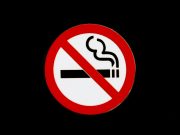A new paper by the World Health Organization (WHO) reported an increase in alcohol and nicotine use among teenagers in Europe, Central Asia, and Canada. The report also noted a shift in gender trends, where girls are now either matching or surpassing boys in smoking, drinking and vaping, by age 15. This change is noteworthy, given that boys have traditionally drunk and smoked more than girls.
Zooming in on vaping, according to the report 32% of 15-year-olds have tried vapes, with 20% vaping in the last 30 days. Dr. Hans Kluge, WHO Regional Director for Europe, emphasized that this is a serious public health threat as the brain continues to develop until the mid-20s, hence adolescents should be protected from the effects of dangerous products.
An overlooked factor: the increase in vaping corresponds with a decrease in smoking
Meanwhile, the report itself highlights that this surge in e-cigarette use has overtaken smoking, with only 25% of 15-year-olds having tried a traditional cigarette in their lifetime and 15% in the past month. Given that studies have consistently indicated that vapes are significantly safer than regular cigarettes, this latter finding should be considered a positive one. Research has shown that adolescents are inclined to experiment with substances such as nicotine, and in the absence of vaping products, those who are currently vaping would be smoking instead.
On the other hand, the WHO expressed concern over the normalization and targeted marketing of vapes through multimedia platforms, such as video games and entertainment programs aimed at young audiences. Dr. Kluge pointed out that children are constantly exposed to online marketing of harmful products, which normalizes their use.
Social media vape marketing targeted at youth needs to be addressed urgently
Tobacco harm reduction experts worldwide naturally agree that this is a big problem which needs to be tackled. A balanced approach might involve providing infographic adverts in vape retail outlets for smokers interested in using these products to quit smoking, while enforcing strict restrictions on advertising and marketing that depict vapes as lifestyle products.
To address this issue, the WHO calls for a comprehensive ban on advertising across mainstream and social media platforms. While to tackle the increase in youth vaping, the agency recommends that Europe and other countries implement strict measures such as raising taxes, restricting product availability and sales locations, enforcing the minimum legal purchasing age, and banning all flavours in nicotine products.
However, experts in the field argue that any measures which make the products unavailable or harder to access, would be detrimental to smokers using the products as smoking cessation aids. In line with this, EU health ministers are facing mounting pressure to adopt science-based tobacco harm reduction strategies, with the World Vapers’ Alliance (WVA) leading the call for action.
It’s time for the EU to practice what it preaches
This push comes amid delays in tobacco legislation, as health ministers convene in Brussels for a two-day EPSCO meeting where the European “Beating Cancer Plan” is high on the agenda. WVA Director Michael Landl, has sharply criticized current tobacco policies, noting that the EU Commission appears to ignore scientific evidence. He points out that safer nicotine alternatives like vaping and nicotine pouches are significantly less harmful than smoking and have proven effective in helping smokers quit.
Landl underscores that EU health ministers now have a crucial opportunity to support sensible regulations that could prevent up to 700,000 unnecessary deaths each year due to smoking. “The Beating Cancer Plan acknowledges that vaping can help smokers quit,” he said. “Politicians must act on this knowledge.”
The WVA director believes the EPSCO meeting could be a turning point in the EU’s approach to tobacco harm reduction. He reiterates that health ministers should look up to Sweden, which is on track to become the world’s first smoke-free country, largely thanks to endorsing the use of safer nicotine alternatives. The EU could, and should, adopt similar regulations to achieve a smoke-free future.
Supporting the WVA’s call for action is a petition signed by over 35,000 citizens, titled “Every Life Counts,” which urges the EU to adopt harm reduction principles in its tobacco policies. Interested parties are still able to add their name to this petition. The WVA is encouraging the EU Commission and health ministers to take into account both scientific evidence and consumer advocacy as they consider regulations that could save thousands of lives.













